EESE Online Training Courses |
Electrical and Electronics eLearning |
||||
 |
|
NUE 052 - Basic Electrical Circuits |
|
|
A basic electrical circuit is two or more components connected together. Our example shows a battery, switch and load connected in a basic circuit. Below is a collection of the most common measuring instruments connected together with this basic circuit.
Voltmeter (V)With the switch open no voltage is present at the load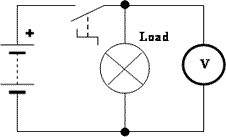
Voltmeters are connected in PARALLEL with the loadWhen the switch is closed a circuit is 'made' and voltage can be measured by the voltmeter. The voltage measured at the load is equal to the supply voltage.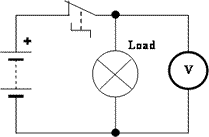
Ammeter (A)Ammeters are connected in SERIES with the load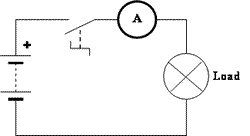
Ammeters are connected in SERIES with the loadWhen the switch is closed a circuit is 'made' and current can be measured by the ammeter. The current measured in the circuit is equal to the current 'drawn' by the load.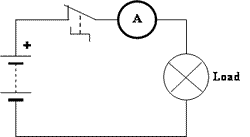
Wattmeter (W)With the switch open no voltage is present at the load AND no current is flowing through the load.
Wattmeters are connected in PARALLEL and SERIES with the loadWhen the switch is closed a circuit is 'made' and power (Watts) can be measured by the wattmeter. The wattmeter is designed to combine the measured voltage and current to show the power consumed by the load in Watts. The formula to find power is P = V x I or Watts equals Volts multiplied by Amps. See the Ohms Law page for more.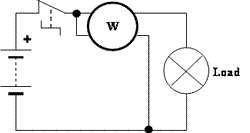
|
|
| Practice Tests are available on the practice test page | |